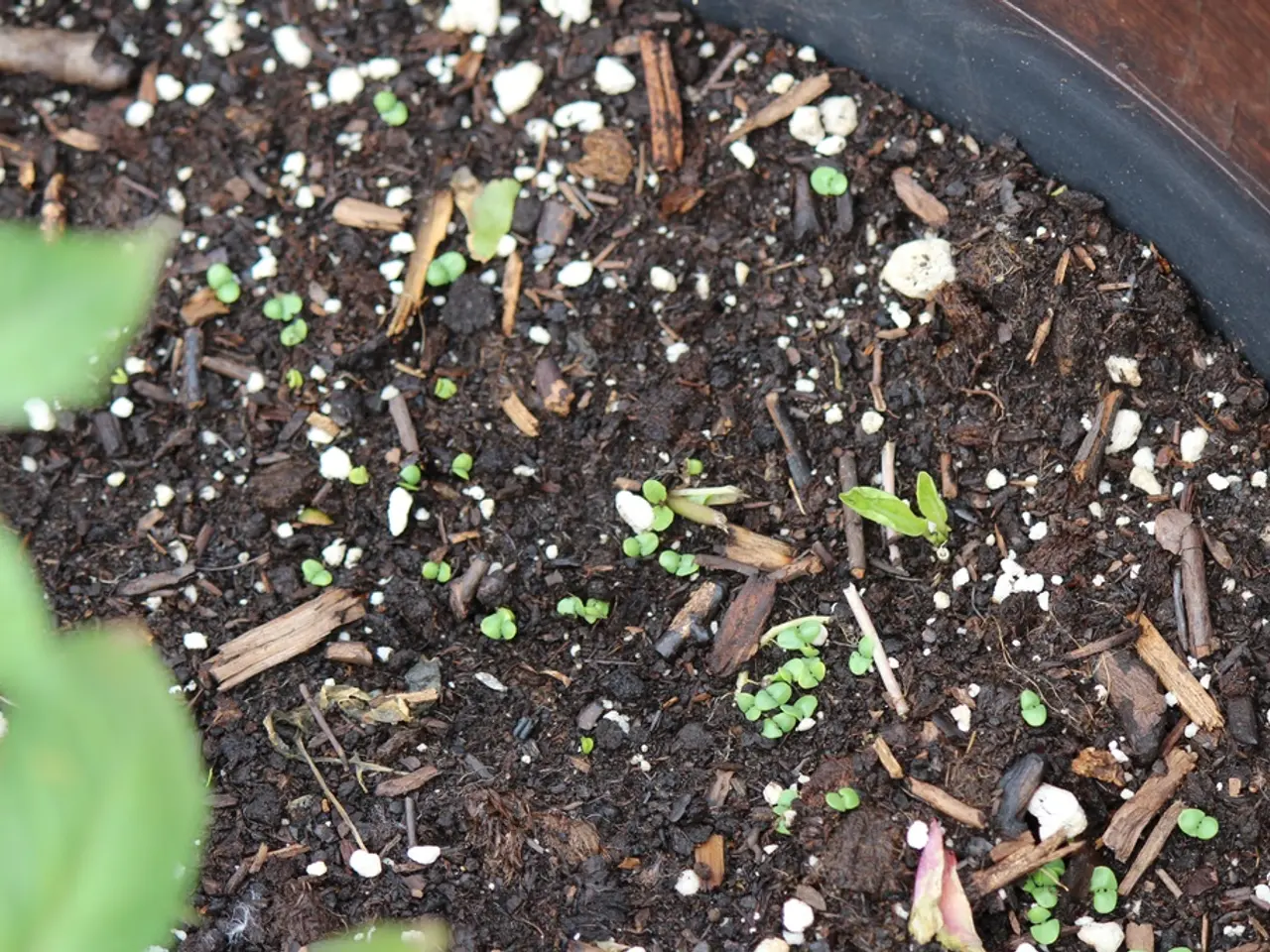Enhancing Soil Fertility: Techniques for Thriving Plant Growth in Clay Terrain
In an effort to transform compacted clay soil into a more friable, well-draining medium, consider implementing a combination of organic matter, aeration, soil amendments, and cover crops.
First, add organic matter such as well-aged compost, manure, shredded leaves, or mulch to the soil surface or lightly mix into the top 5–10 cm. This helps separate tightly packed clay particles, enhances soil structure, feeds soil microbes, and increases porosity for better water movement and aeration.
Next, aerate the soil to create air spaces between particles. This can be done manually or mechanically, depending on the size of the area. Aeration improves drainage by allowing water to percolate and roots to grow. Avoid working wet clay to prevent further compaction.
Use soil amendments like gypsum, which can help break up clay particles and reduce soil compaction without disturbing the soil by digging. Gypsum should be applied on the surface and watered in, typically about ½ pound per square foot annually. Mulch also protects the soil surface and, combined with organic matter or gypsum, promotes gradual improvement in soil texture.
Plant cover crops with long roots, such as daikon radishes and alfalfa, to naturally loosen compacted clay. These crops add organic matter, improve soil structure, and stimulate microbial activity. Cover crops are best planted at the end of the growing season and incorporated into the soil in spring annually for continuous benefit.
For maximum benefit, plant a second cover crop in the spring and till it under in the fall. Plant cover crops in the fall after the rains begin so that the soil is softer. It may take a full year of cover crops to see significant improvement in your garden soil.
Additional effective practices include creating raised beds layered with organic materials (wood, cardboard, mulch), which act as a sponge improving drainage and aeration beneath, as earthworms and microbes break down these layers and loosen clay soil over time.
Before making any amendments to your soil, it's essential to test your soil to determine its makeup, organic matter content, pH, and nutrient levels. Cover crops like alfalfa, fava beans, and clover can help improve clay soil structure by loosening it and pulling nutrients from the subsoil to the topsoil.
With patience and consistent seasonal application, these strategies will improve soil aggregation, increase air and water flow, foster microbial life, and ultimately transform compacted clay into a thriving garden soil.
Gardening practices that boost a home-and-garden lifestyle can include planting cover crops, such as daikon radishes and alfalfa, to naturally loosen compacted clay soil. These cover crops can also improve soil structure and stimulate microbial activity. In the home-and-garden realm, organic matter like aged compost, manure, shredded leaves, or mulch added to the soil can help separate clay particles, enhance soil structure, and increase porosity.




